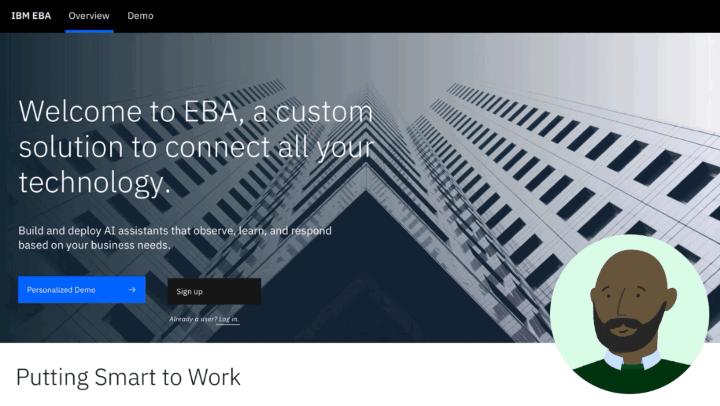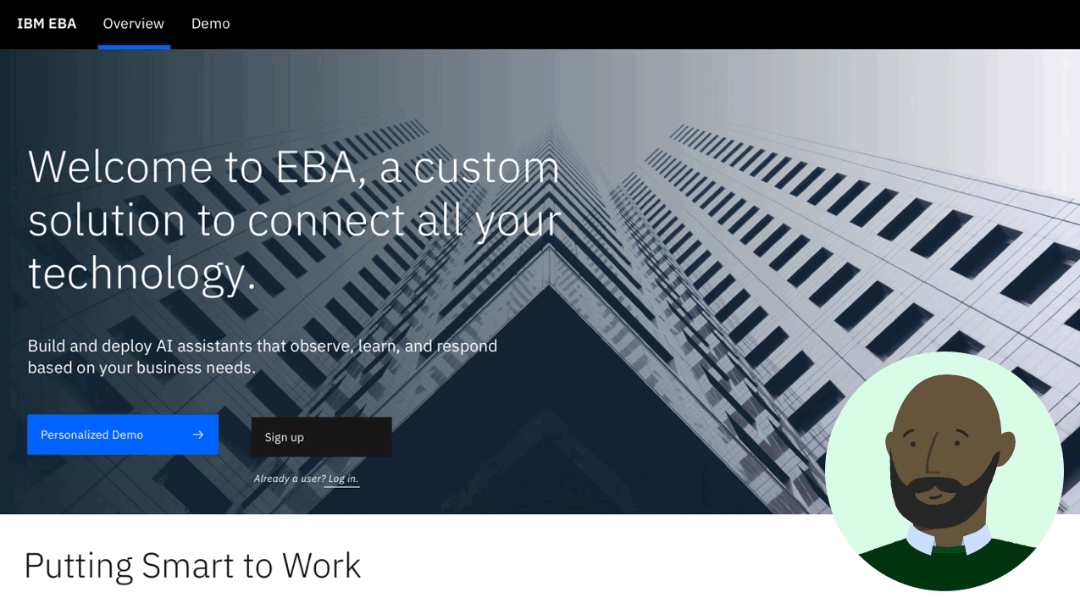IBM's Embedded Business AI Framework
EBA was created by an IBM distinguished engineer as an incubator project before LLMs were popular, and since been rolled into IBM Watson Orchestrate.
Project summary
This was a part of my 6-week incubator project at IBM’s Austin Design Studios and showcases the application of Enterprise Design Thinking.
The problems
It was difficult for decision makers to understand what EBA can do.
EBA requires Natural Language Processing, a skill that most engineers did not have, and was difficult to learn.
Long ramp-up time because Engineers typically end up having to build EBA solutions from scratch.
Our solution
Created a clear and concise landing page highlighting a proof of concept and effectively communicates what EBA can do.
Added in-app interactive tutorials that teach NLP concepts.
Provided example solutions for common use cases so engineers can use as boilerplates or references.
My role: UX Designer on a team of 3 UX designers, 1 visual designer, 1 content designer and 2 product managers
Obtain domain knowledge
Stakeholder map
To start, we spoke with EBA engineers and product managers to understand the product space. To add clarity to our conversations with the product team, we mapped out key players' relationships to one another in a stakeholder map.
Stakeholder map
Industry workflows
We found that employees who rely on data spend a disproportionate amount of time on menial tasks.
Desk research findings
User research
7
2
2
We had to work pretty closely with the [EBA] development team… just to understand how we were expected to program with the library provided.
Key findings
Only 1/7th of the software developers we interviewed had experience with NLP.
Software developers heavily rely on documentation and examples.
Decision makers work wi/ business practitioners & devs to streamline operations, but must evaluate dozens of tools to find solutions that fit.
Empathy maps
User problems
User 1: the business practitioner
Tim, Digital advertising specialist
Tim spends a lot of time manually wrangling data to create client reports. This consumes hours that could be spent on strategic optimization instead.
User 2: the decision maker
Alan, Head of IT
Alan needs to analyze dozens of tools that fit within his organization's workflow, but he can't understand what EBA can do.
User 3: the software developer
Taylor, Software developer
Taylor needs to create internal tools that help streamline workflows for her company's business practitioners, but she doesn't know NLP and EBA takes a long time to ramp up.
Project Hills
Hill 1
A decision maker can discover EBA, recognize how it will improve efficiency for their business practitioners, and within minutes, want to integrate it into their ecosystem.
Hill 2
Any developer can discover and build natural language AI assistants for their business without possessing any prior knowledge of NLP.
Hill 3
Any developer can learn to build and deploy an AI assistant in half the ramp-up time and without having to contact IBM support for assistance.
Design thinking
Final solution
Alan can now clearly see what EBA does and how it works. He understands EBA's main features, and personalized demos successfully convinces him that this is the right solution for his organization.
Taylor can now hit the ground running with an in-app NLP tutorial that teaches NLP concepts from a high level, and sufficient enough for her to start coding a solution within the EBA platform.
Taylor uses a boilerplate we provide to start building a digital advertising assistant for Tim. She has a working proof of concept in a few days (as opposed to weeks)
Tim uses his new assistant for his tedious data tasks, leaving more time for strategic optimization.















